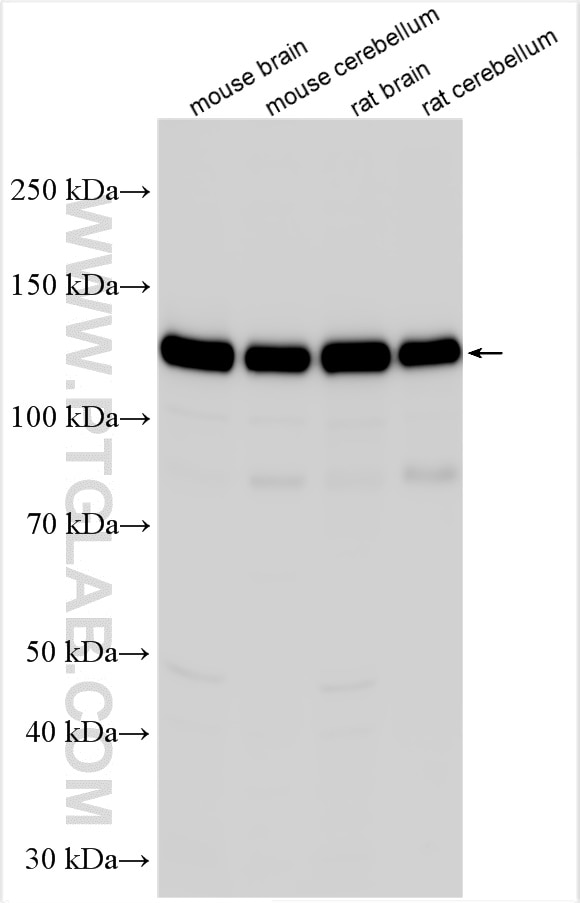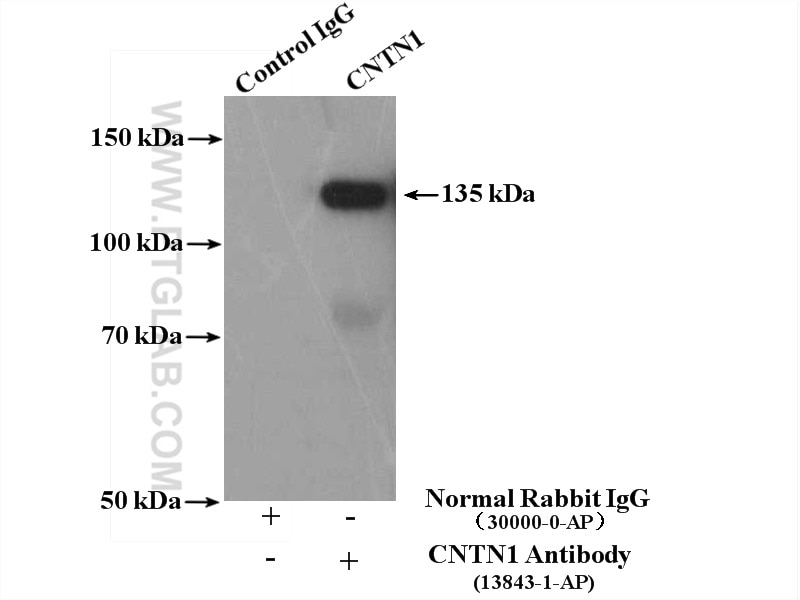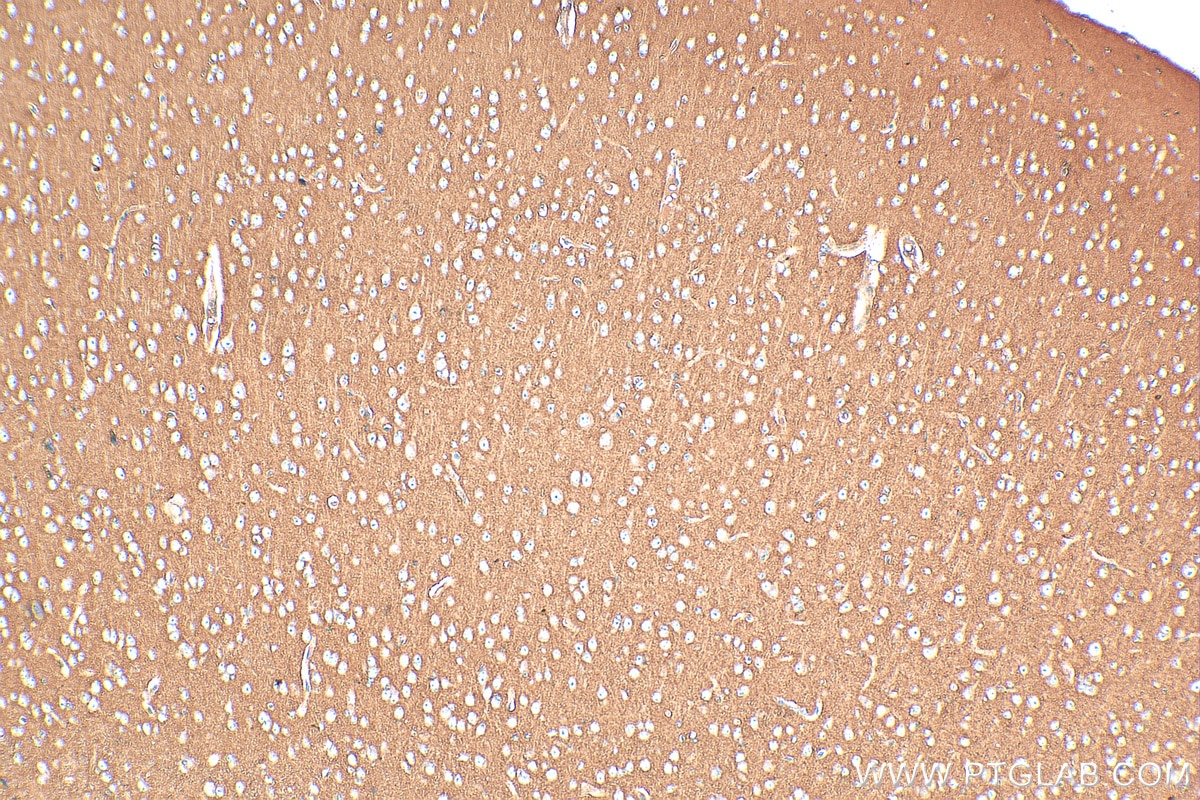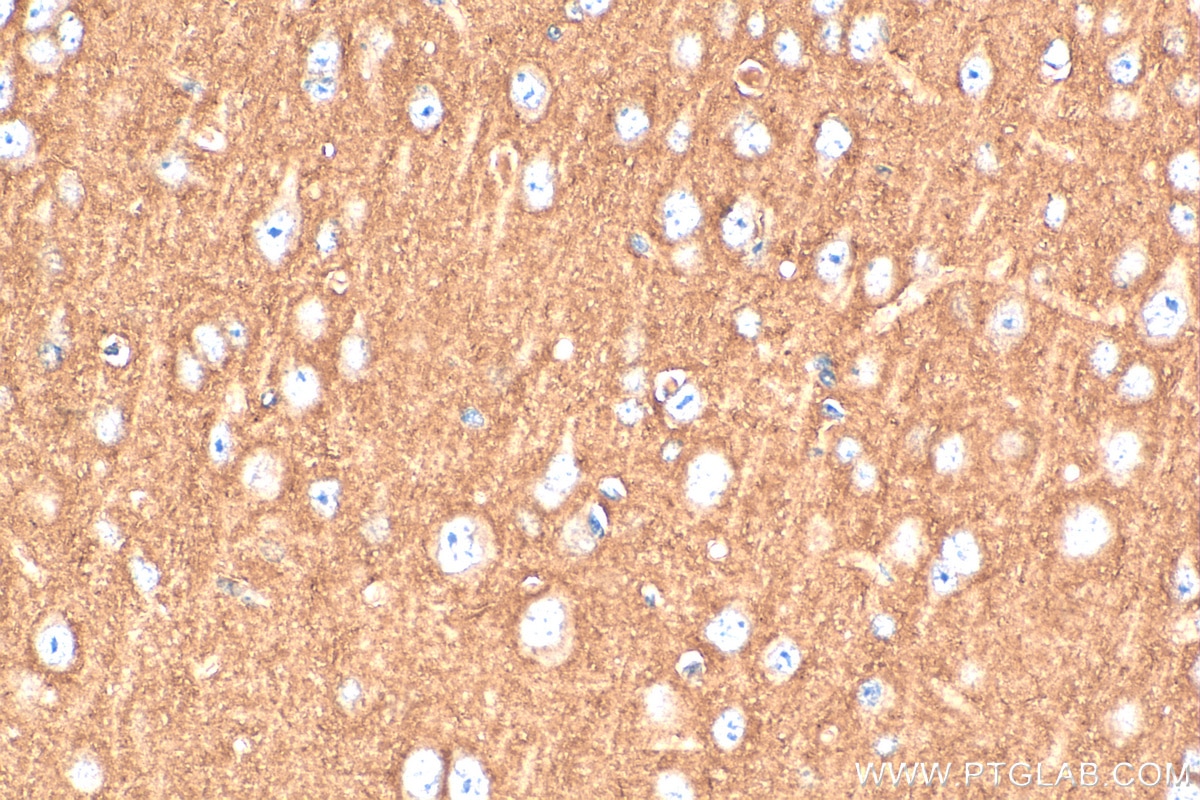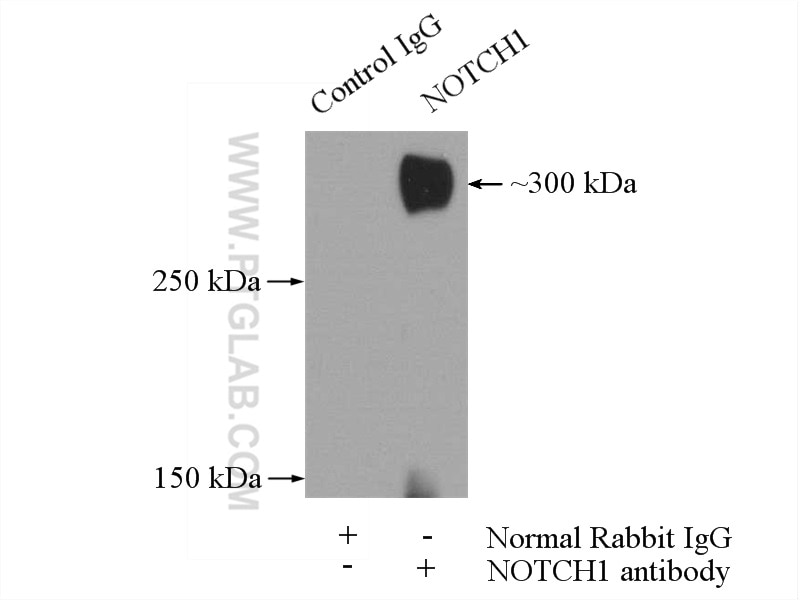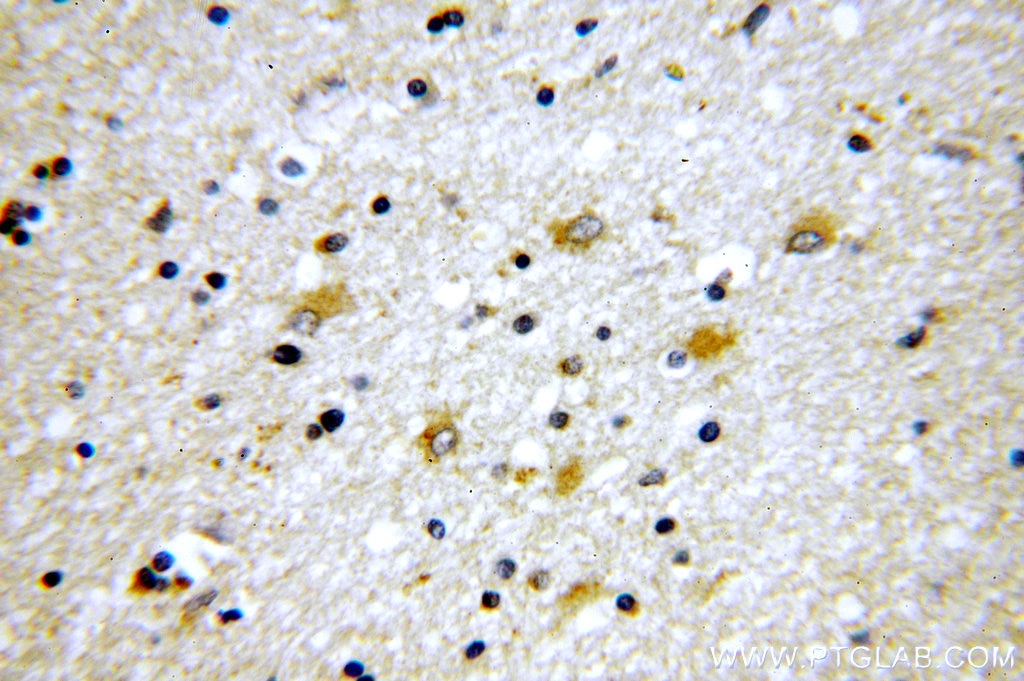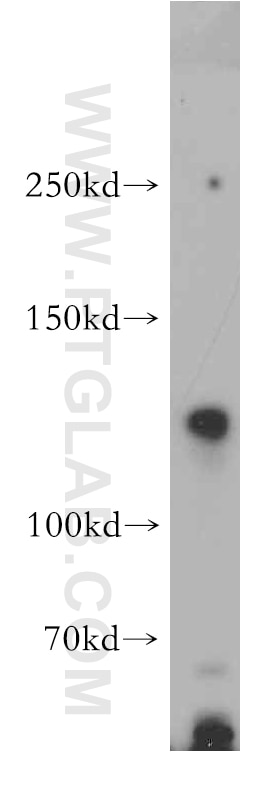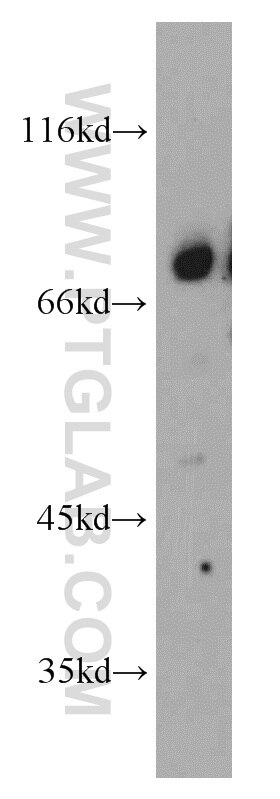- Featured Product
- KD/KO Validated
CNTN1 Polyklonaler Antikörper
CNTN1 Polyklonal Antikörper für WB, IP, IHC, ELISA
Wirt / Isotyp
Kaninchen / IgG
Getestete Reaktivität
human, Maus, Ratte
Anwendung
WB, IP, IF, IHC, ELISA
Konjugation
Unkonjugiert
Kat-Nr. : 13843-1-AP
Synonyme
Galerie der Validierungsdaten
Geprüfte Anwendungen
| Erfolgreiche Detektion in WB | Maushirngewebe, Maus-Cerebellum-Gewebe, Ratten-Cerebellum-Gewebe, Rattenhirngewebe |
| Erfolgreiche IP | Rattenhirngewebe |
| Erfolgreiche Detektion in IHC | Maushirngewebe Hinweis: Antigendemaskierung mit TE-Puffer pH 9,0 empfohlen. (*) Wahlweise kann die Antigendemaskierung auch mit Citratpuffer pH 6,0 erfolgen. |
Empfohlene Verdünnung
| Anwendung | Verdünnung |
|---|---|
| Western Blot (WB) | WB : 1:5000-1:50000 |
| Immunpräzipitation (IP) | IP : 0.5-4.0 ug for 1.0-3.0 mg of total protein lysate |
| Immunhistochemie (IHC) | IHC : 1:200-1:800 |
| It is recommended that this reagent should be titrated in each testing system to obtain optimal results. | |
| Sample-dependent, check data in validation data gallery | |
Veröffentlichte Anwendungen
| KD/KO | See 2 publications below |
| WB | See 6 publications below |
| IHC | See 2 publications below |
| IF | See 2 publications below |
Produktinformation
13843-1-AP bindet in WB, IP, IF, IHC, ELISA CNTN1 und zeigt Reaktivität mit human, Maus, Ratten
| Getestete Reaktivität | human, Maus, Ratte |
| In Publikationen genannte Reaktivität | human, Maus, Ratte |
| Wirt / Isotyp | Kaninchen / IgG |
| Klonalität | Polyklonal |
| Typ | Antikörper |
| Immunogen | CNTN1 fusion protein Ag4803 |
| Vollständiger Name | contactin 1 |
| Berechnetes Molekulargewicht | 1018 aa, 113 kDa |
| Beobachtetes Molekulargewicht | 135 kDa |
| GenBank-Zugangsnummer | BC036569 |
| Gene symbol | CNTN1 |
| Gene ID (NCBI) | 1272 |
| Konjugation | Unkonjugiert |
| Form | Liquid |
| Reinigungsmethode | Antigen-Affinitätsreinigung |
| Lagerungspuffer | PBS mit 0.02% Natriumazid und 50% Glycerin pH 7.3. |
| Lagerungsbedingungen | Bei -20°C lagern. Nach dem Versand ein Jahr lang stabil Aliquotieren ist bei -20oC Lagerung nicht notwendig. 20ul Größen enthalten 0,1% BSA. |
Hintergrundinformationen
Contactin-1 (CNTN1), also known as Glycoprotein gp135 or Neural cell surface protein F3, is a neuronal cell adhesion molecule of the immunoglobulin superfamily (PMID: 3049624). It consists of six Ig domains, four fibronectin-like motifs, and a glycosylphosphatidylinositol (GPI)-moiety. Expressed by the central and peripheral neurons, CNTN1 contributes to the formation and function of neuronal connections. It plays a role in axon extension and formation of septate-like junctions between axons and myelinating glial cells (PMID: 23724143). In addition, acting as a ligand for Notch, CNTN1 initiates a NOTCH/DTX1 signaling pathway that promotes oligodendrocyte maturation and myelination (PMID: 14567914).
Protokolle
| Produktspezifische Protokolle | |
|---|---|
| WB protocol for CNTN1 antibody 13843-1-AP | Protokoll herunterladen |
| IHC protocol for CNTN1 antibody 13843-1-AP | Protokoll herunterladen |
| IP protocol for CNTN1 antibody 13843-1-AP | Protokoll herunterladen |
| Standard-Protokolle | |
|---|---|
| Klicken Sie hier, um unsere Standardprotokolle anzuzeigen |
Publikationen
| Species | Application | Title |
|---|---|---|
Nat Commun Identification of genes associated with cortical malformation using a transposon-mediated somatic mutagenesis screen in mice.
| ||
Nat Commun Spatial mapping of juxtacrine axo-glial interactions identifies novel molecules in peripheral myelination. | ||
Front Mol Neurosci Contactin-1/F3 Regulates Neuronal Migration and Morphogenesis Through Modulating RhoA Activity.
| ||
Front Genet CNTN-1 Upregulation Induced by Low-Dose Cisplatin Promotes Malignant Progression of Lung Adenocarcinoma Cells via Activation of Epithelial-Mesenchymal Transition. | ||
Arch Med Sci CNTN-1 promotes docetaxel resistance and epithelial-to-mesenchymal transition via the PI3K/Akt signaling pathway in prostate cancer. |
